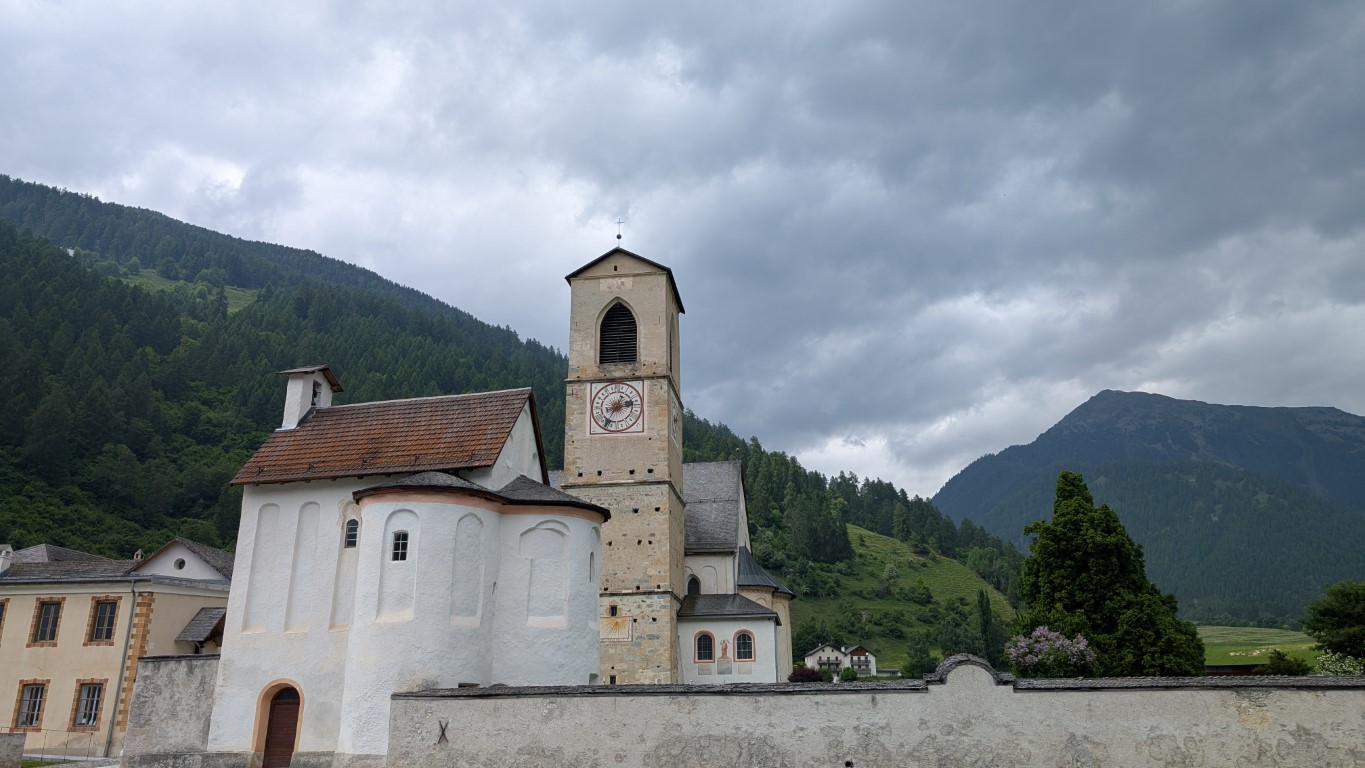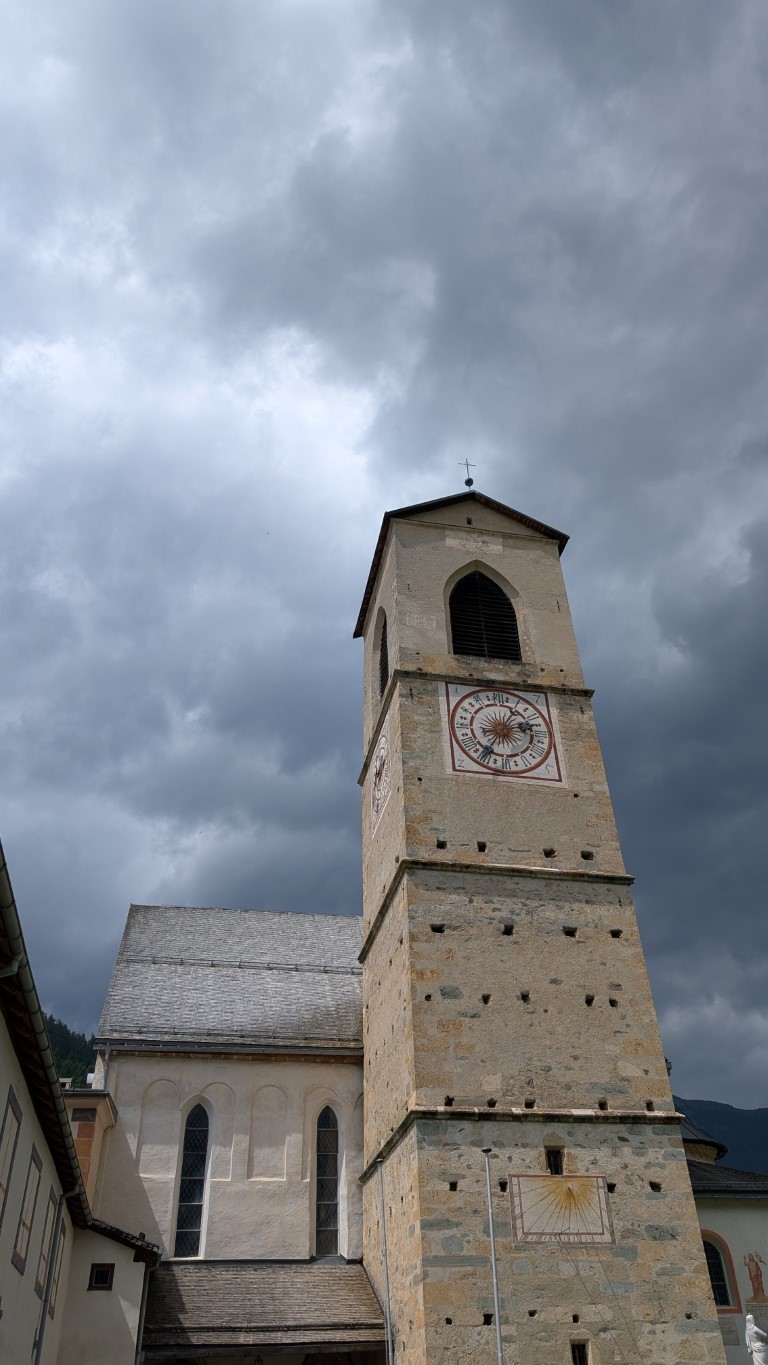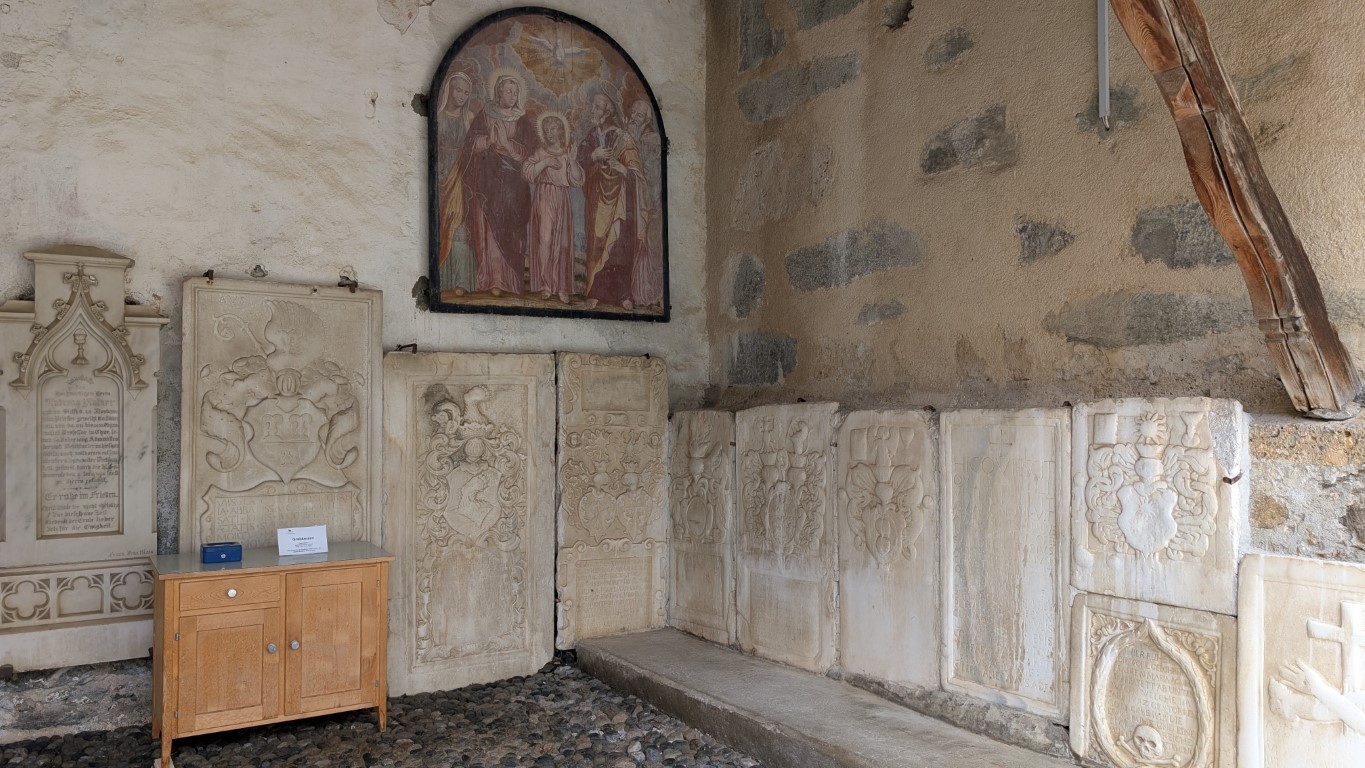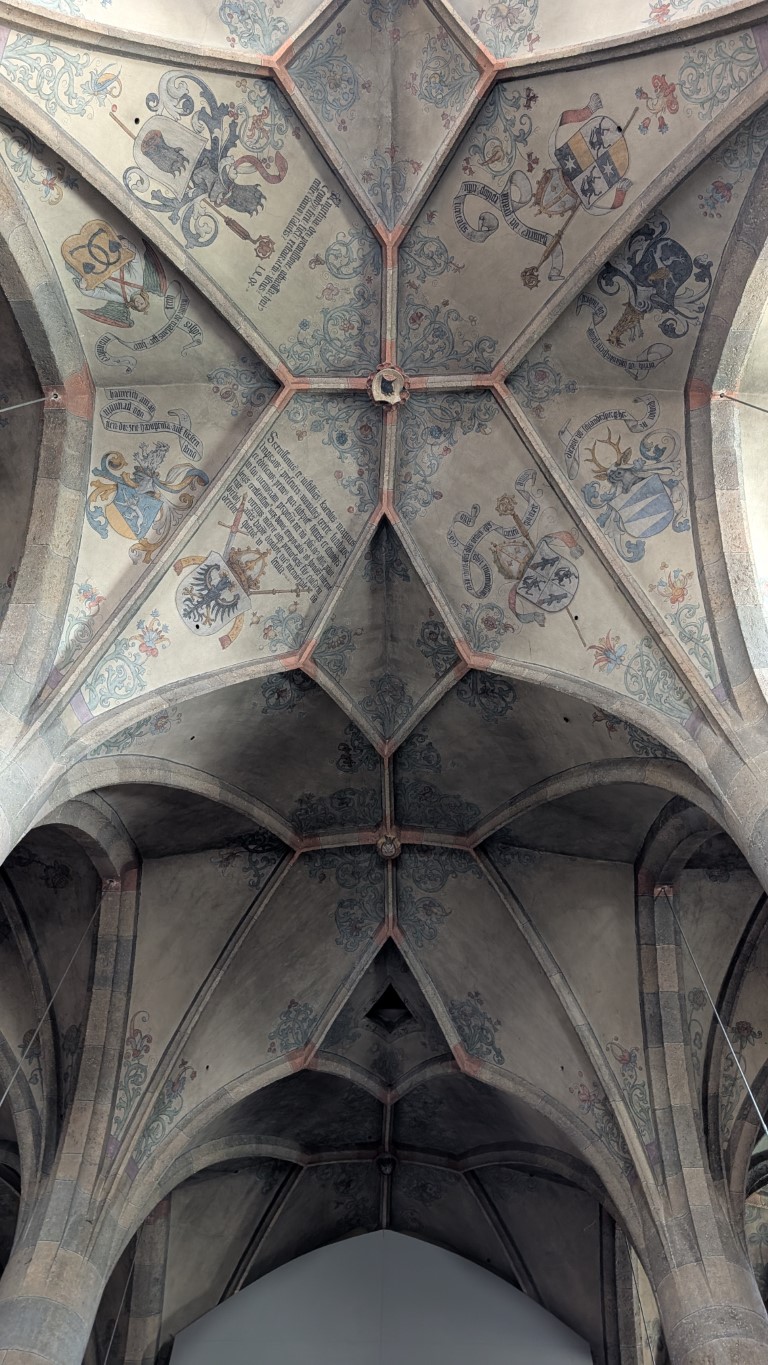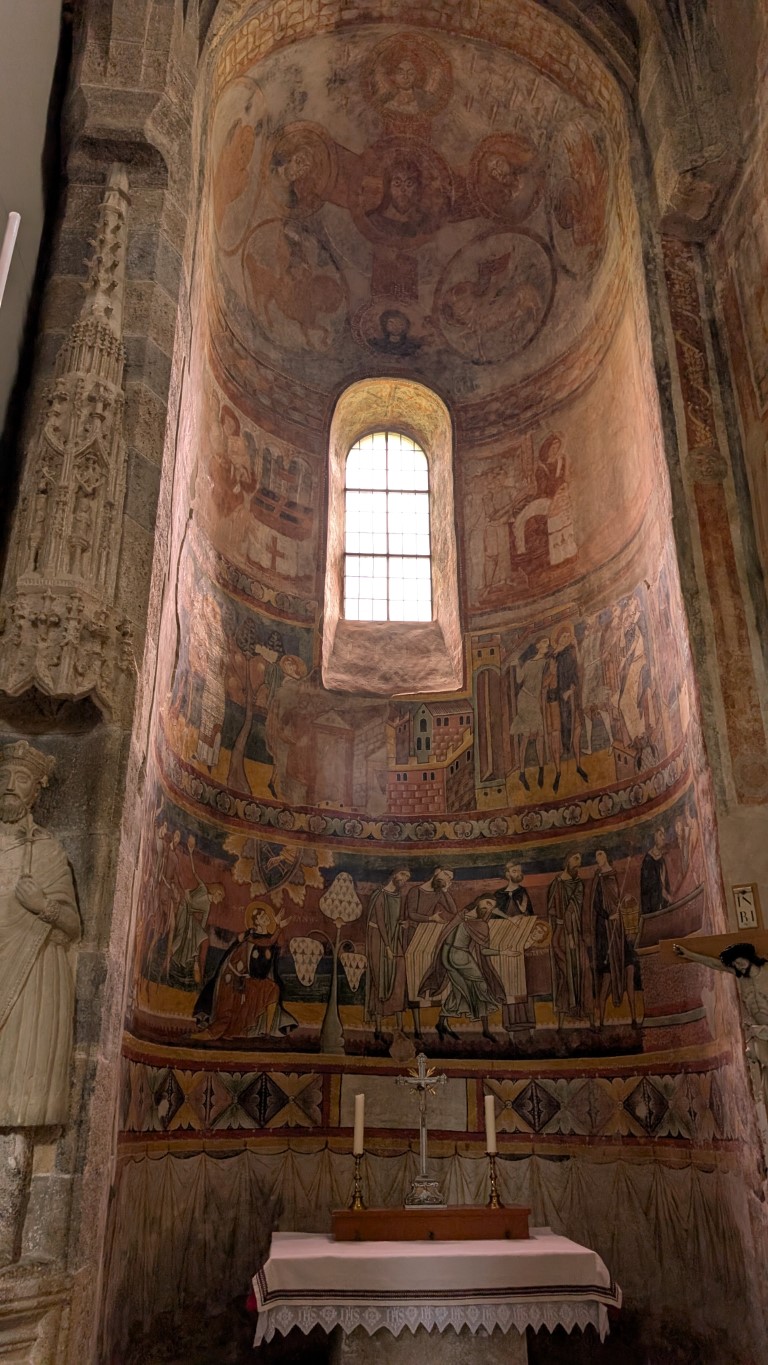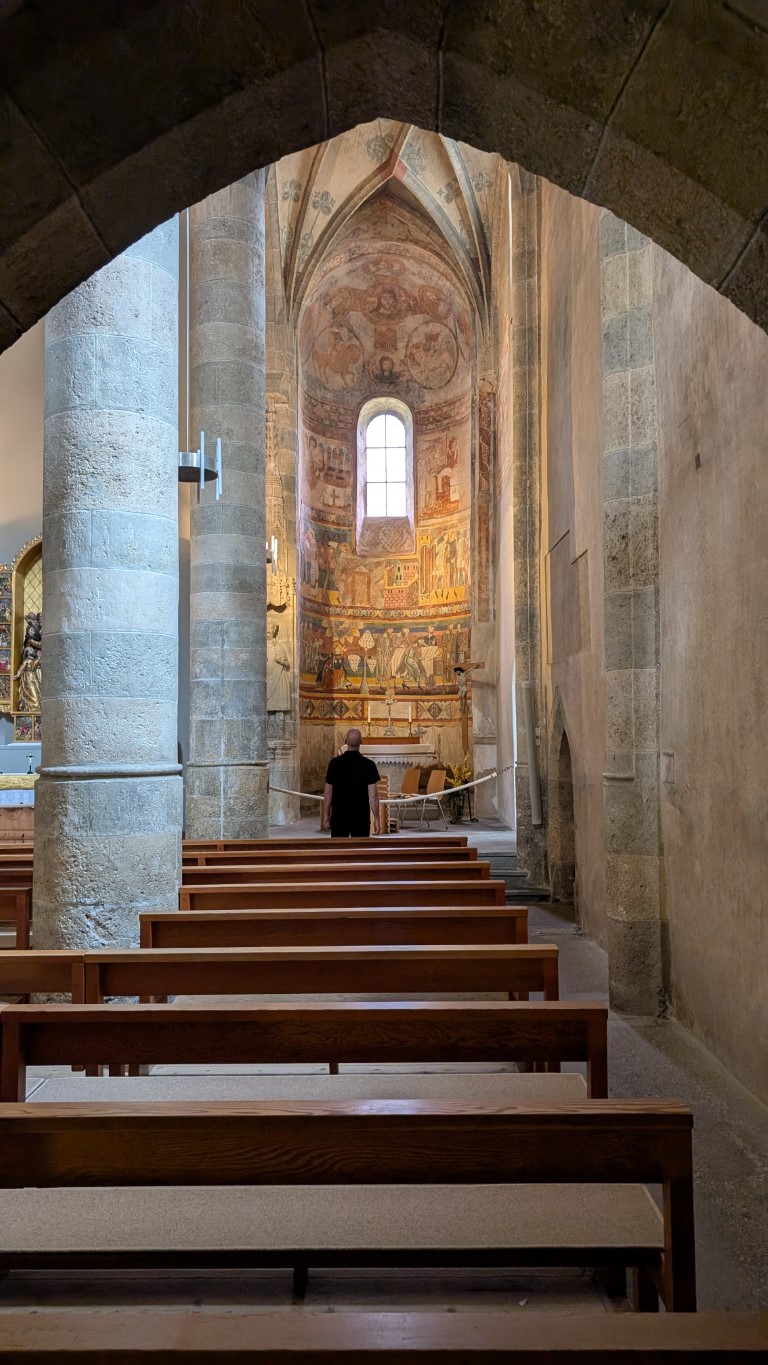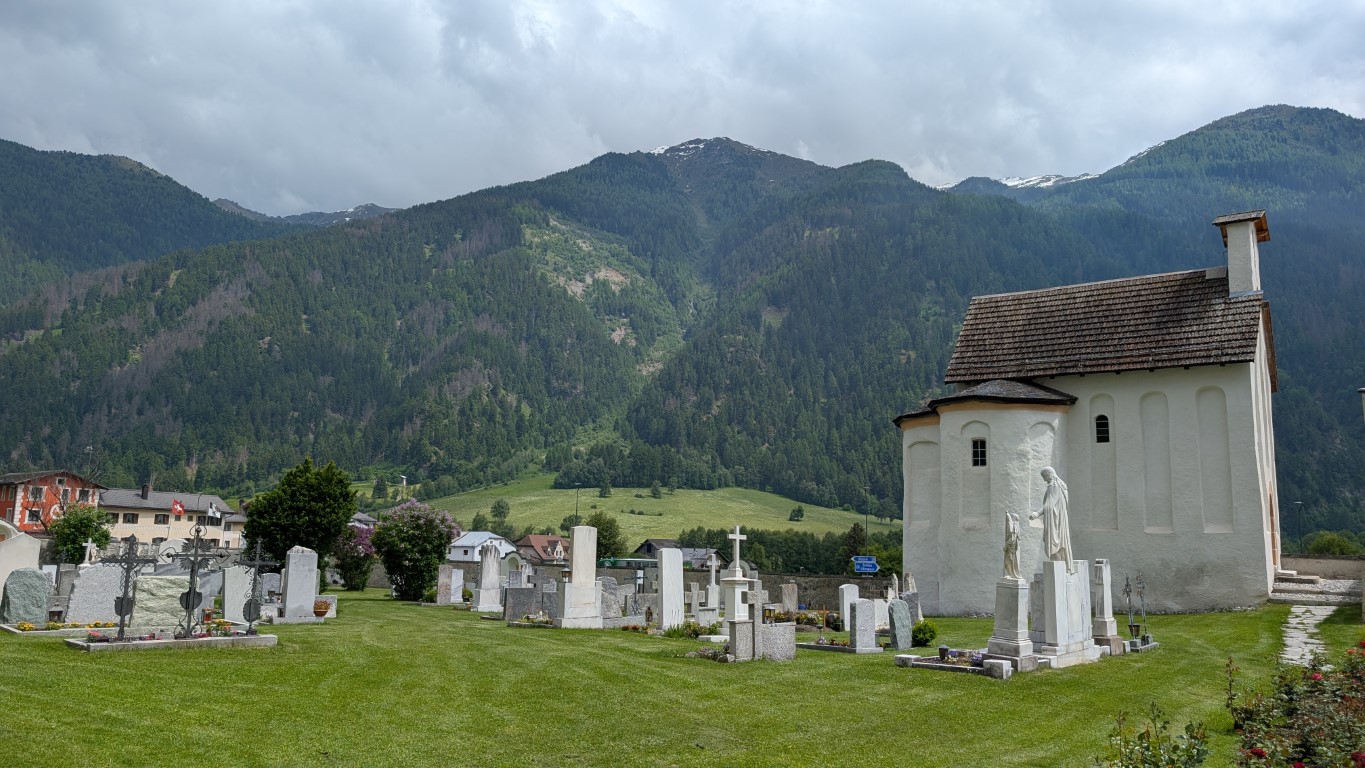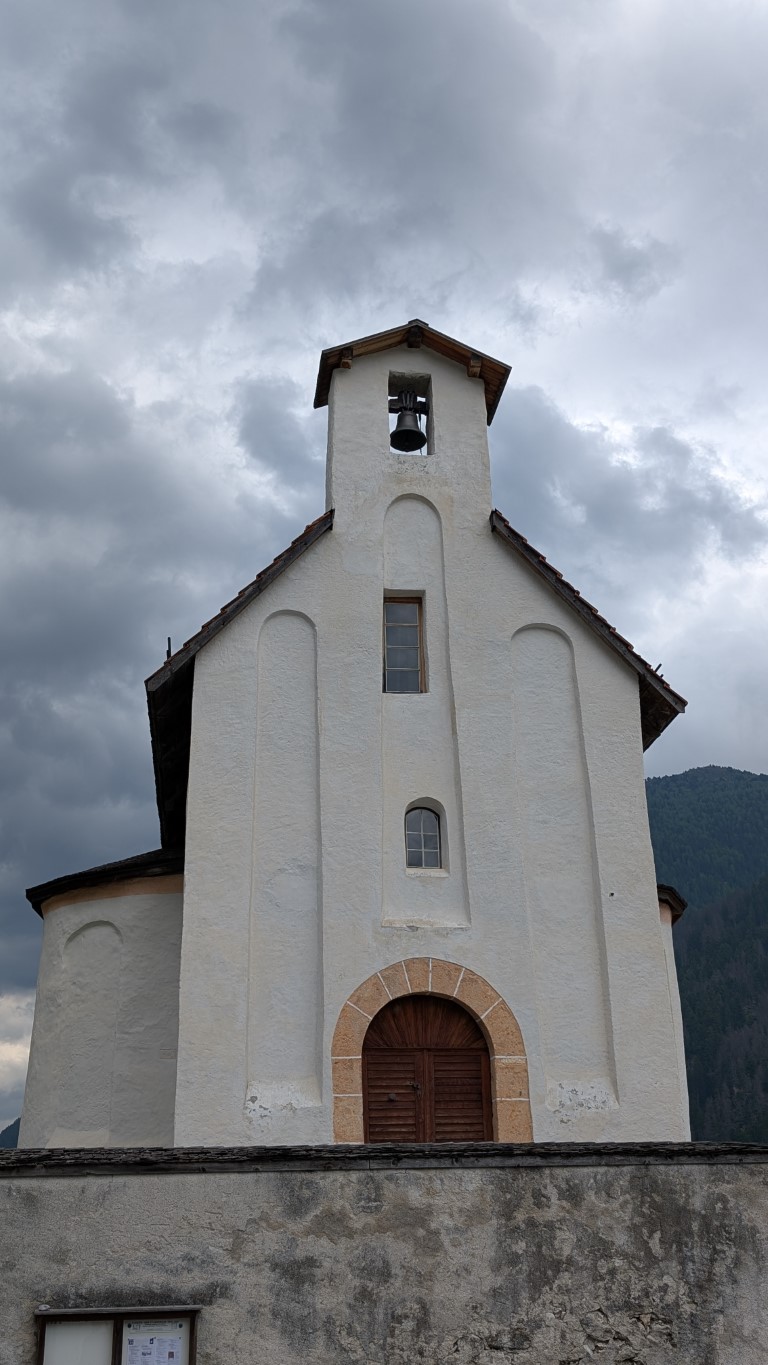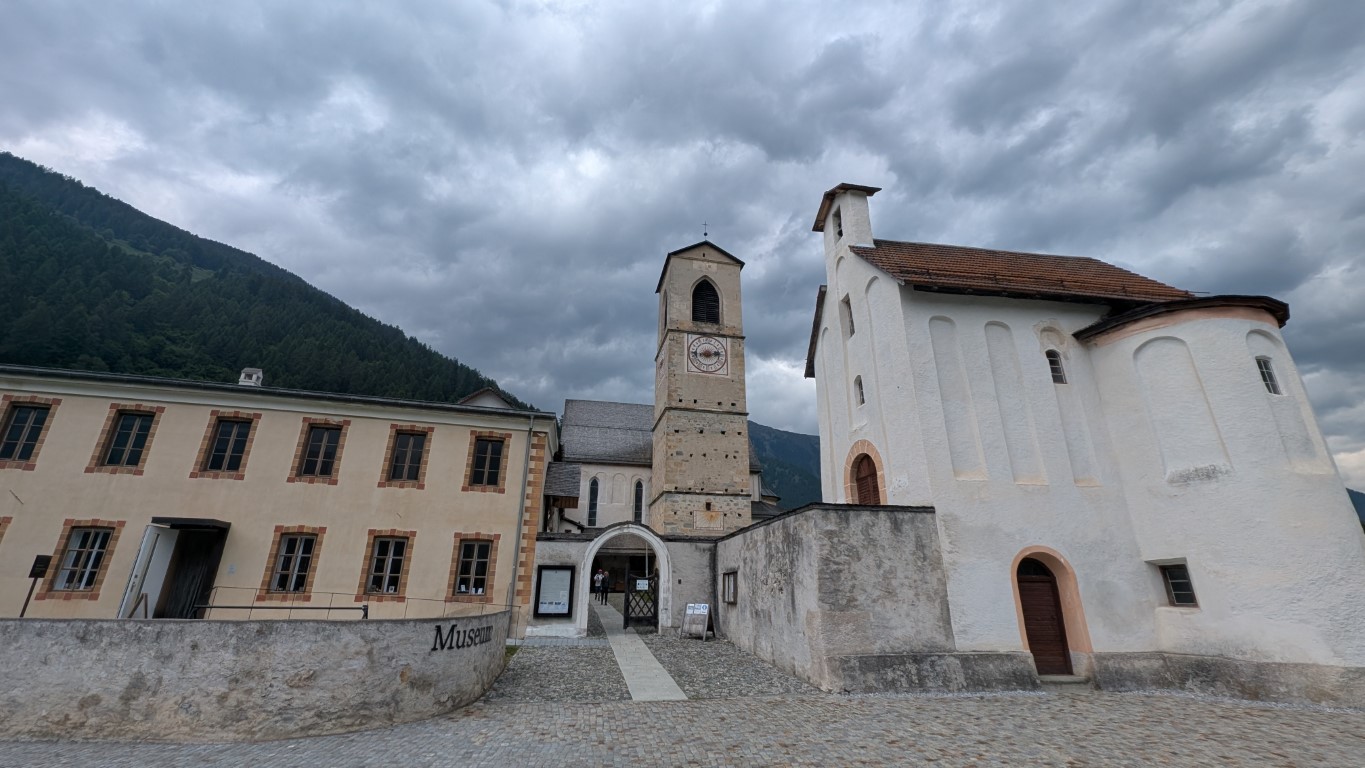There are places where the centuries breathe – slowly, majestically, like a procession of light and stone. Places that are more than buildings of lime and wood – they are living chronicles, sacred vessels full of ancient secrets. One of these places is the Monastery of St. John in Müstair, hidden in the quiet corner of the Val Müstair, where Switzerland bends toward the southern sun and the mountains offer their heads to heaven like praying hands.
The Birth of Storm and Grace
The monastery complex rises as if from another era, firmly enclosed by walls that whisper as the wind blows past. According to legend, it was Charlemagne who founded this sanctuary as a token of gratitude after a snowstorm on the Umbrail Pass spared him. Perhaps it was a divine sign, perhaps an imperial dream. In any case, a history is rooted here that has lived on unbroken since the 8th century – sustained by light, prayer, and the silent sound of eternity.
The statue of the mighty Frankish ruler in the monastery church is not just a memory – it is a symbol, a bronze anchor that connects us to a time when Christianity still traveled with swords and psalms at the same time.
A building as if cast from a single piece – yet grown like a tree
The monastery complex appears as if it were created in a single breath – yet it grew over the centuries like a living organism. Romanesque round arches, Carolingian frescoes, Gothic window frames, and Baroque princely chambers combine to form a mosaic of centuries. Here, forms and times merge into a single spiritual space where even the shadows are steeped in history.
In the Holy Cross Chapel, whose origins date back to 785, the prayers of the early monks still echo. And the Carolingian frescoes, discovered beneath the dust of history in 1894, gaze upon our troubled present with the eyes of faith from a distant time—gentle, admonishing, timeless.
The miracle in change
More than a dozen centuries have passed through the monastery: plague and war, Reformation and revolution, occupation and rebirth. In 1492, the church was converted into a three-aisled hall church, and in 1528, Müstair remained faithful to the Catholic faith. In 1799, French troops marched through the cloister – and with them disappeared the Holy Blood relic, a sacred treasure that is still considered lost today.
Yet the monastery endured. It transformed without losing itself. Since 1200, it has been a women's monastery—a place of quiet feminine strength, spiritual depth, and contemplative perseverance. And even today, in the 21st century, it remains a vibrant center for research, monument preservation, and spirituality—including the SAVAIR Center of Excellence, which preserves the wisdom of past times for future generations.
A World Heritage Site – and the Heart of the World
Since 1983, St. John's Monastery has been a UNESCO World Heritage Site. But it is more than a monument: It is a place of quiet contemplation, a pilgrimage destination for all who wish to feel the pulse of history. Those who stroll through the gardens here, past sheep plucking the grass between the chapels, sense time not as an enemy, but as a friend. Here, time is allowed to be. Here, it is not rushed, not repressed – but heard, respected, and celebrated.


